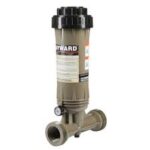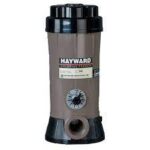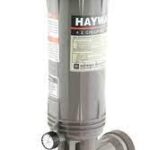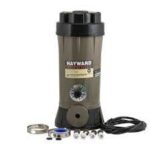




Swimming Pool External Adjustable Water Inlet to The Outlet Pipe Fittings
- Capacity
The maximum capacity of a chlorinator should be 1.5 to 2 times the size of the pool. For example, a pool that is 20,000 gallons should have a chlorinator with a maximum capacity of at least 30,000 gallons.
- Chlorine type
Automatic chlorinators typically work with dissolvable chlorine tablets or sticks. Chlorine can come in the form of a tablet, granule, powder, liquid, or gas.
- Materials
Some chlorinators are made with corrosion-resistant materials, such as titanium, to prevent corrosion from moist chlorine gas.
- Safety features
Some chlorinators have safety features like a capsulated inlet safety shut-off/vacuum regulating valve, a pressure relief valve, and a dual high-pressure/low-pressure check valve system.
- Ease of use
Some chlorinators have features that make them easier to service and maintain, such as standard size wrench lugs on all screwed-together ejector parts.
- SKC-20
Weighs 5.5 kg, has a pressure limit of approximately 0.3 MPa, and uses NEO-CHLOR 90 granular.
- PNR Chlorinator
Has a life of 10,000 hours, can manually or automatically regulate chlorine, and has an IP65 control panel.
- SSC Series ChlorinatorHas a maximum working pressure of 250 kPa/36 psi/2.5 bar, and comes in three models with different flow rates.
